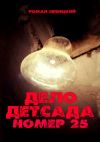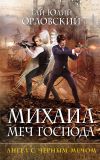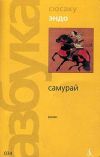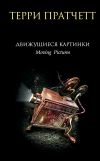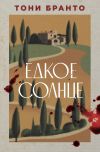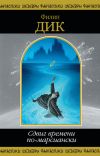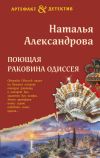Текст книги "Зов Ктулху / The Call of Chulhu"

Автор книги: Говард Лавкрафт
Жанр: Иностранные языки, Наука и Образование
Возрастные ограничения: +16
сообщить о неприемлемом содержимом
Текущая страница: 3 (всего у книги 10 страниц) [доступный отрывок для чтения: 3 страниц]
II
Boring journey of January 11th to 18th with Pabodie and five others had brought up more and more of the Archaean slate; and even I was interested in evident fossil markings in that unbelievably ancient stratum. These markings were of very primitive life forms. However I decided not to accompany the northwestward party despite Lake’s plea for my geological advice. While they were gone, I would remain at the base with Pabodie and five men and work out final plans for the eastward shift.
Lake’s expedition into the unknown sent out reports from the shortwave transmitters on the planes. The start was made January 22nd at 4 a.m., and the first wireless message we received came only two hours later, when Lake spoke of descending and starting an ice-melting and boring at a point some three hundred miles away from us. Six hours after a second message told of the frantic work. Three hours later a brief bulletin announced the resumption of the flight. I saw that Lake was extremely excited, and that I could do nothing to check the risk of the whole expedition’s success.
Then, in about an hour and a half more, came that excited message from Lake’s plane, which almost reversed my sentiments:
“10:05 p.m. On the wing. After snowstorm, appeared mountain range ahead higher than any hitherto seen. May equal Himalayas.[137]137
may equal Himalayas – возможно, подобны Гималаям
[Закрыть] Probable Latitude 76° 15’, Longitude 113° 10’ E. Two smoking cones. All peaks black and bare of snow. Strong wind impedes navigation.”
After that Pabodie, the men and I stood by the receiver. Thought of these titanic mountains seven hundred miles away inflamed our deepest sense of adventure. In half an hour Lake called us again:
“The plane forced down on plateau in foothills, but nobody hurt and perhaps can repair. We will transfer things to other three planes. You can’t imagine anything like this. Highest peaks must go over thirty-five thousand feet. Atwood will work with theodolite[138]138
theodolite – теодолит, прибор для измерения горизонтальных и вертикальных углов при топографических съёмках, геодезических работах
[Закрыть] while Carroll and I will go up. Possibly pre-Cambrian slate[139]139
pre-Cambrian slate – докембрийские сланцы
[Закрыть] with other strata mixed in. Queer skyline effects – regular sections of cubes clinging to highest peaks. Like land of mystery in a dream or gateway to forbidden world. Wish you were here[140]140
wish you were here – хотелось бы, чтобы вы были здесь
[Закрыть] to study.”
Though it was sleeping-time, not one of us went to bed. We were sorry, of course, about the damaged aeroplane, but hoped it could be easily fixed. Then, at 11 p.m., came another call from Lake:
“Up with Carroll over highest foothills. Frightful to climb, and hard to go at this altitude, but it’s worth it. Main summits exceed Himalayas, and very queer. Range looks like pre-Cambrian slate, with plain signs of many other strata. Odd formations on slopes of highest mountains. Great low square blocks with exactly vertical sides, and rectangular lines of low, vertical ramparts, like the old Asian castles. Impressive from distance. Carroll thought they were formed of smaller separate pieces, but that is probably an illusion.
Parts, especially upper parts, seem lighter than any visible strata on slopes. Close flying shows many cave-mouths, some unusually regular in outline, square or semicircular. You must come and investigate. I saw rampart squarely on top of one peak. Height seems about thirty thousand to thirty-five thousand feet. I am up twenty-one thousand, five hundred myself, in devilish, gnawing cold. Wind whistles and pipes, but no flying danger.”
I replied that I would join Lake as soon as he could send a plane. It was possible that the eastward flight might not be made, after all, this season.
Lake called me later to say that he had decided to let the camp stay where Moulton’s plane had landed. The ice sheet was very thin, with dark ground here and there visible. Lake spoke of the majesty of the whole scene, and the queer state of his sensations. The height of the five tallest peaks was from thirty thousand to thirty-four thousand feet. The camp lay a little more than five miles from the higher foothills. I could trace a note of subconscious alarm in his words. He was ready to rest now, after a continuous day’s work.
In the morning it was agreed that one of Lake’s planes would come to my base for Pabodie, the five men, and myself, as well as for all the fuel it could carry. Pabodie and I prepared to close our base for a short or long period, as the case might be. Some of our conical tents were reinforced by blocks of hard snow, and now we decided to complete the job of making a permanent village. I sent a message that Pabodie and I would be ready for the northwestward journey after one day’s work and one night’s rest.
Lake began to send me the most extraordinary and excited messages. He had resolved to do some local boring as part of the expedition’s general program. In three hours young Gedney[141]141
Gedney – Гедни
[Закрыть] – the acting foreman[142]142
the acting foreman – руководитель работ
[Закрыть] – rushed into the camp with the shocking news.
They had struck a cave. The layer was not more than seven or eight feet deep but extended off in all directions. Its roof and floor were equipped with large stalactites and stalagmites;[143]143
stalactites and stalagmites – сталактиты и сталагмиты
[Закрыть] but the most important things were shells and bones. This medley contained representatives of more Cretaceous,[144]144
Cretaceous – меловой период (последний период мезозойской эры, закончился 66 млн. лет назад)
[Закрыть] Eocene,[145]145
Eocene – эоцен (вторая геологическая эпоха палеогенового периода, закончилась 33,9 млн. лет назад)
[Закрыть] and other animal species than the greatest paleontologist could count or classify in a year. Mollusks, fishes, amphibians, reptiles, birds, and early mammals – great and small, known and unknown. No wonder Gedney ran back to the camp, and no wonder everyone else dropped work and rushed headlong to a new-found gateway to secrets of inner earth and vanished ages.
Lake wrote a message in his notebook and sent young Moulton to run back to the camp to tell it by wireless. This was my first word of the discovery, and it told of the identification of early shells, bones, remnants of labyrinthodonts and thecodonts,[146]146
labyrinthodonts and thecodonts – лабиринтодонты (подкласс вымерших амфибий) и текодонты (ископаемые хищники, родственные динозаврам, птерозаврам и крокодилам)
[Закрыть] great skull fragments, dinosaur vertebrae and armor plates, pterodactyl teeth and wing bones, Archaeopteryx debris,[147]147
Archaeopteryx debris – останки археоптерикса (вымершее позвоночное позднего юрского периода)
[Закрыть] Miocene[148]148
Miocene – миоцен (первая эпоха неогенового периода, закончилась 5,333 млн. лет назад)
[Закрыть] sharks’ teeth, primitive bird skulls, and other bones of archaic mammals. Lake concluded that the last deposits had occurred during the Oligocene Age,[149]149
Oligocene Age – олигоцен (последняя эпоха палеогенового периода, закончилась 23,03 млн. лет назад)
[Закрыть] so they are at least thirty million years old.
The inevitable conclusion was that in this part of the world there had been a remarkable and unique degree of continuity between the life of over three hundred million years ago and that of only thirty million years ago. Lake continued to send us frequent messages. Those who followed the newspapers will remember the excitement created among scientists by that afternoon’s reports. I will give the messages literally as Lake sent them:
“Fowler[150]150
Fowler – Фаулер
[Закрыть] discovers important fragments in sandstone and limestone. Several distinct triangular striated prints like those in Archaean slate. That is, their source survived from over six hundred million years ago to Comanchian times[151]151
Comanchian times – команчские времена
[Закрыть] without morphological changes. Comanchian prints apparently more primitive or decadent than older ones. It will mean to biology what Einstein has meant to mathematics and physics. It joins up with my previous work and conclusions.As I suspected, the earth has seen whole cycle or cycles of organic life before known one that begins with Archaeozoic cells.[152]152
Archaeozoic cells – археозойские клетки (археозой – геологический период, во время которого жизнь существовала в условиях бескислородной восстановительной атмосферы)
[Закрыть] A thousand million years ago the planet was inhabitable. The question arises when, where, and how evolution took place.”* * *
“Later. Examining certain skeletal fragments of large land and marine creatures and primitive mammals, I found local wounds or injuries to bony structure. One or two cases of clean bones. Not many specimens affected. I am sending to the camp for electric torches. I want to extend search area underground.”
* * *
“Still later. I have found a peculiar soapstone fragment about six inches across and an inch and a half thick, greenish. It is impossible to place its period. It has curious smoothness and regularity and is shaped like five-pointed star with tips broken off, with signs of other cleavage at inward angles and in center of surface. Probably water action. Dogs were barking continuously while we were working, and they hate this soapstone. I must check if it has any peculiar odor. I will report again when Mills gets back with light and we start on underground area.”
* * *
“10:15 p.m. Important discovery. Orrendorf and Watkins,[153]153
Orrendorf and Watkins – Оррендорф и Уоткинс
[Закрыть] working underground at 9:45 with light, found monstrous barrel-shaped fossil of wholly unknown nature, probably vegetable. It is tough as leather, but flexibility retained in places. Six feet end to end, three and five-tenths feet central diameter. Like a barrel with five bulging ridges in place of staves. In furrows between ridges there are curious combs or wings that fold up and spread out like fans. This reminds one of certain monsters of primal myth, especially fabled Elder Things in Necronomicon. The wings are membraneous, ends of body shriveled. I can’t decide whether it is vegetable or animal. I have trouble with dogs. They can’t endure the new specimen, and would probably tear it to pieces if we didn’t keep it at a distance from them.”* * *
“11:30 p.m. Attention, Dyer, Pabodie, Douglas. Matter of highest importance. Arkham must connect to Kingsport Head Station at once. The strange barrel left prints in rocks. Mills, Boudreau, and Fowler discover thirteen of them. Mixed with curiously rounded soapstone fragments smaller than one previously found. We have brought all to surface. The dogs cannot stand the things.”
“Objects are eight feet long all over. Six-foot, five-ridged barrel torso three and five-tenths feet central diameter, one foot end diameters. Dark gray, flexible, and infinitely tough. Seven-foot membranous wings of same color, folded, spread out of furrows between ridges. Spread wings have edges. Around equator, one at central apex of each of the five vertical, stave-like ridges are five systems of light gray flexible arms or tentacles tightly folded to torso but expansible to maximum length of over three feet. Like arms of primitive crinoid.”
“At top of torso blunt, bulbous neck of lighter gray, with yellowish five-pointed starfish-shaped head covered with three-inch wiry things of various prismatic colors. At end of each tube is spherical expansion where yellowish membrane rolls back. Five slightly longer reddish tubes start from inner angles of starfish-shaped head. All these tubes, and points of starfish head, are folded tightly down.”
“At bottom of torso, rough counterparts of head arrangements exist. Bulbous light-gray pseudo-neck, without gill suggestions, holds greenish five-pointed starfish arrangement. Tough, muscular arms four feet long and seven inches diameter at base to about two and five-tenths at point. To each point is attached small end of a greenish five-veined membranous triangle eight inches long and six wide at farther end. All these parts infinitely tough and leathery, but extremely flexible. Four-foot arms.”
“Cannot yet assign positively to animal or vegetable kingdom. Fabulously early date of evolution, preceding even simplest Archaean protozoa hitherto known.”
“Complete specimens look like creatures of primal myth. Dyer[154]154
Dyer – Дайер
[Закрыть] and Pabodie have read Necronomicon and seen Clark Ashton Smith’s nightmare paintings based on text, and will understand when I speak of Elder Things who have created all earth life. Also like prehistoric folklore things Wilmarth[155]155
Wilmarth – Уилмарт
[Закрыть] has spoken of – Cthulhu cult, etc.”“Vast field of study. We will continue to search later. The dogs bark furiously and can’t be held near them. The wind is bad. But I’ve got to dissect one of these things before we go to sleep. I wish I had a real laboratory here. First the world’s greatest mountains, and then this. Thank Pabodie whose device helped to open up the cave. Now please repeat description.”
The sensations of Pabodie and myself were almost beyond description. I sent Lake congratulations as soon as the Arkham’s operator had repeated back the descriptive parts as requested. Of course, rest was an absurd thought; and my only wish was to get to Lake’s camp as quickly as I could.
Lake, sending more messages, told of the completely successful transportation of the fourteen great specimens to the camp. It had been a hard work, for the things were surprisingly heavy; but nine men had accomplished it very neatly. Now some of the party were building a snow corral at a safe distance from the camp, to which the dogs could be brought. The specimens were laid out on the hard snow near the camp, save for one which Lake was trying to dissect.
This dissection seemed to be a greater task than had been expected. The deceptively flexible tissues of the chosen specimen – a powerful and intact one – were really tough. How to make the requisite incisions without violence destructive? But eventually, he succeeded.
Results, quickly reported over the wireless, were baffling and provocative indeed. This thing was no product of any cell growth science knows about. Despite an age of perhaps forty million years, the internal organs were wholly intact. The leathery of almost indestructible quality was an inherent attribute of the thing. At first all that Lake found was dry, but soon organic moisture of pungent and offensive odor was encountered toward the thing’s uninjured side. It was not blood, but thick, dark-green fluid. By the time Lake reached this stage, all thirty-seven dogs had been brought to the corral near the camp, and even at that distance a savage barking was heard.
All guesses about its external members had been correct, one could call the thing animal; but internal inspection brought up many vegetable evidences. It had digestion and circulation, and threw waste matter through the reddish tubes. Cursorily, there were odd evidences of air-storage chambers. Clearly, it was amphibian. Vocal organs were present in connection with the main respiratory system. Articulate speech was impossible, but musical piping notes were highly probable. The muscular system was greatly developed. The nervous system was very complex and highly developed as well. The thing had a set of ganglial centers and connectives. And it probably had more than five senses. It must, Lake thought, have been a creature of keen sensitiveness.
But to give it a name at this stage was impossible. It looked like a radiate, but was clearly something more. It was partly vegetable, but had three-fourths of the essentials of animal structure. How could it undergo its tremendously complex evolution on a new-born earth? Lake recalled the primal myths about Great Old Ones who came down from the stars and concocted earth life; and the wild tales of cosmic hill things from outside told by a folklorist colleague in Miskatonic’s English department. So Lake jocosely named his creatures “The Elder Ones.”
At about 2:30 A. M. Lake, covered the dissected organism with tarpaulin, left the laboratory tent, and studied the intact specimens with renewed interest. He moved all the undissected specimens close together and threw a spare tent over them in order to keep off the direct solar rays. That would also help to keep their possible scent away from the dogs, whose hostile unrest was really a problem.
It was after four when Lake at last prepared to sleep. He held some friendly chat with Pabodie, and repeated his praise of the really marvelous devices that had helped him make his discovery. Atwood also sent greetings and praises. I gave Lake a warm word of congratulations, and we all agreed to get in touch by wireless at ten in the morning. If the strong wind was then over, Lake would send a plane for the party at my base.
III
None of us, I imagine, slept very heavily or continuously that morning. It was because of the excitement of Lake’s discovery and the fury of the wind. McTighe[156]156
McTighe – МакТай
[Закрыть] was awake at ten o’clock and tried to get Lake on the wireless, as agreed, but electrical condition prevented communication. We got, however, the Arkham, and Douglas told me that he had vainly tried to reach Lake. He had not known about the wind, there was no storm at McMurdo Sound.
Throughout the day we all listened anxiously and tried to get Lake at intervals, but without results. After three o’clock the wind was very quiet, and we redoubled our efforts to get Lake. Nevertheless the silence continued.
By six o’clock our fears had become intense and definite, and after a wireless consultation with Douglas and Thorfinnssen I decided to take steps toward investigation. The fifth aeroplane, which we had left at the McMurdo Sound with Sherman and two sailors, was in good shape and ready for instant use. I got Sherman by wireless and ordered him to join me with the plane and the two sailors at the southern base as quickly as possible.
Sherman,[157]157
Sherman – Шерман
[Закрыть] with the sailors Gunnarsson and Larsen,[158]158
Gunnarsson and Larsen – Гуннарсон и Ларсен
[Закрыть] took off at 7:30, and reported a quiet flight from several points on the wing. They arrived at our base at midnight. It was risky business sailing over the Antarctic in a single aeroplane without any bases, but no one drew back. At 4 o’clock we were ready to finish the loading and packing.
At 7:15 a.m., January 25th, we started flying northwestward under McTighe’s pilotage with ten men, seven dogs, a sledge, a fuel and food supply, and other items including the plane’s wireless outfit. The atmosphere was clear, fairly quiet, and relatively mild in temperature.
The sailor Larsen was first to see the jagged line of witch-like cones and pinnacles ahead. The mountains rose grimly into the western sky. I felt that they were evil things – mountains of madness whose farther slopes looked out over some ultimate abyss.
It was young Danforth[159]159
Danforth – Данфорт
[Закрыть] noticed the curious regularities of the higher mountain skyline – regularities like clinging fragments of perfect cubes, which Lake had mentioned in his messages, and which indeed were like primordial temple ruins. How disturbingly this lethal realm corresponded to the evilly famed plateau of Leng in the primal writings. Mythologists have placed Leng in Central Asia; but the racial memory of man – or of his predecessors – is long, and it may be that certain tales have come down from lands and mountains and temples of horror earlier than Asia and earlier than any human world we know. Leng, wherever in space or time it might exist, was not a region I would like to be in or near. At the moment I felt sorry that I had read the abhorred Necronomicon, or talked so much with that folklorist Wilmarth at the university.
We drew near the mountains and began to distinguish the cumulative undulations of the foothills. I had seen dozens of polar mirages during the preceding weeks; but this one had a wholly novel and obscure quality of menacing symbolism.
It looked like a Cyclopean city of no architecture known to man or to human imagination, with vast aggregations of night-black masonry. It embodied monstrous perversions of geometrical laws. There were truncated cones, sometimes terraced or fluted, surmounted by tall cylindrical shafts here and there bulbously enlarged; and strange beetling, table-like constructions, rectangular slabs, circular plates, five-pointed stars. There were composite cones and pyramids, surmounting cylinders or cubes or truncated cones and pyramids. The view was terrifying and oppressive in its sheer gigantism.
I was glad when the mirage began to disappear. As the whole illusion dissolved we began to look earthward again, and saw that our journey’s end was near. The unknown mountains ahead rose like a fearsome rampart of giants. We were over the lowest foothills now, and could see amidst the snow, ice, and bare patches of their main plateau a couple of darkish spots which we took to be Lake’s camp and boring. The higher foothills started between five and six miles away, forming a range. Ropes[160]160
Ropes – Роупс
[Закрыть] – the student who had changed McTighe – began to head downward toward the left-hand dark spot. As he did so, McTighe sent out the last wireless message from our expedition to the world.
Everyone, of course, has read our brief bulletins. Some hours after our landing we sent a report of the tragedy we found, and announced the end of the whole Lake party from the frightful wind of the preceding day, or of the night before that. Eleven dead, young Gedney missing. But we went beyond the truth.[161]161
went beyond the truth – не сказали всей правды
[Закрыть] We dared not tell; and I would not tell the truth now but for the need[162]162
but for the need – только ради необходимости
[Закрыть] of warning others.
It is a fact that the wind had been really terrible. One aeroplane shelter was nearly crashed; and the derrick was entirely shaken to pieces. Two of the small tents were flattened despite their snow banking. It is also true that we found none of the Archaean biological objects. We gathered some minerals from a vast, tumbled pile, including several greenish soapstone fragments, and some fossil bones.
None of the dogs survived, their snow house near the camp was wholly destroyed. The wind may have done that. All three sledges were gone, and we have tried to explain that the wind may have blown them off. The drill and ice-melting machinery at the boring were badly damaged. We brought back all the books, scientific equipment, and other things we could find.
At 4 p.m, after trying to find Gedney, we sent our message to the Arkham. About the fourteen biological specimens, we were indefinite. We said that they were damaged, but that was enough to prove Lake’s description wholly and accurate. It was hard work to hide our personal emotions – and we did not mention how we had found those things which we did find. We had agreed not to say about probable madness of Lake’s men: they carefully buried six imperfect monstrosities upright in nine-foot snow graves under five-pointed mounds. The eight perfect specimens mentioned by Lake disappeared.
I said little about that frightful trip over the mountains the next day that I had made with Danforth. It was the fact that only a lightened plane could possibly cross a range of such height. On our return at 1 a.m., Danforth was close to hysterics. I persuaded him not to show our sketches and the other things we brought away in our pockets, not to say anything more to the others than what we had agreed to say, and to hide our camera films for private development later on. So that part of my present story will be quite new to Pabodie, McTighe, Ropes, Sherman, and the rest as it will be to the world in general. Indeed, Danforth is more silent than I: for he probably saw something he would not tell even me.
As all know, our report included a tale of a hard ascent – a confirmation of Lake’s words. This is in every respect true, and it completely satisfied the men at the camp. We were absent for sixteen hours – a longer time than our flying, landing, and rock-collecting program demanded, but we said it had been due to wind conditions, and told truly of our landing on the farther foothills. Fortunately our tale sounded realistic and prosaic enough. While we were gone, Pabodie, Sherman, Ropes, McTighe, and Williamson had worked like beavers over Lake’s two best planes.
We decided to load all the planes the next morning and start back for our old base as soon as possible. That was the safest way to work toward McMurdo Sound. Further exploration was hardly possible in view of our tragic events and the ruin of our drilling machinery. The doubts and horrors around us – which we did not reveal – made us wish only to escape from this austral world of madness.
As the public knows, our return to the world was accomplished without further disasters. All planes reached the old base on the evening of the next day – January 27th – after a swift non-stop flight; and on the 28th we reached McMurdo Sound.
In five days more, the Arkham and Miskatonic entered the Ross Sea. Less than a fortnight later we left that polar land behind us and thanked heaven that we were alive.
Since our return we have all constantly worked to discourage Antarctic exploration. Even young Danforth has not told anything to his doctors.
Lake’s reports of those biological monstrosities had aroused the highest naturalists’ and paleontologists’ interest, though we were sensible enough not to show the detached parts we had taken from the actual buried specimens, or our photographs of those specimens as they were found. We also did not show the scarred bones and greenish soapstones; while Danforth and I were alone we studied them in terror, and brought away in our pockets.
But now that Starkweather-Moore party[163]163
Starkweather-Moore party – экспедиция Старкуэтера-Мура
[Закрыть] is organizing. They can get to the innermost nucleus of the Antarctic and melt and bore till they bring up that which we know may end the world.[164]164
may end the world – может погубить человечество
[Закрыть] So I must tell everything I know – even about that ultimate, nameless thing beyond the mountains of madness.
Внимание! Это не конец книги.
Если начало книги вам понравилось, то полную версию можно приобрести у нашего партнёра - распространителя легального контента. Поддержите автора!Правообладателям!
Данное произведение размещено по согласованию с ООО "ЛитРес" (20% исходного текста). Если размещение книги нарушает чьи-либо права, то сообщите об этом.Читателям!
Оплатили, но не знаете что делать дальше?